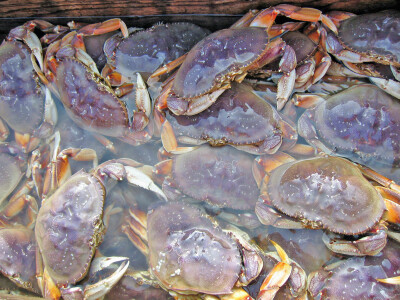Fishing outlooks for some of Alaska’s largest catches are running the gamut from celebratory (salmon) to relief (Bering Sea crab) to catastrophic (Gulf of Alaska cod).
Stakeholders were stunned to learn that surveys yielded the lowest numbers ever for Pacific cod in the federally managed waters of the Gulf of Alaska.
Fisheries biologist Steve Barbeaux of the Alaska Fisheries Science Center in Seattle said the summer survey, done every other year, revealed that the cod year classes for 2012 and 2013 appeared to be “wiped out” in the gulf, and the data suggest recruitment failures through 2016.
Overall, the surveys reflected a 71 percent decline in Gulf of Alaska cod abundance since 2015, and an 83 percent decline since 2013. The cod crash coincides with the record warm water temperatures there in 2015, Barbeaux said.
Preliminary estimates indicate cod catches in the Gulf of Alaska next year could drop by 60 to 85 percent, although the data must undergo further analysis and could change when final decisions are made in December. The 2018 cod catches in the Bering Sea and Aleutian Islands fishery, however, are expected to remain the same at nearly 527 million pounds.
The 2017 gulf cod harvest from federal waters was 150,000 metric tons (330 million pounds), which was down 20 percent from the previous year.
The cod crash will be felt in waters closer to shore as well.
“The state cod fishery harvest guidelines are based on the federal harvest level. So as that declines, the state harvests will decline as well,” said Forrest Bowers, deputy director of the commercial fisheries division for the Alaska Department of Fish and Game.
The state waters allowable cod harvest for 2017 is approximately 45 million pounds.
Pacific cod accounted for 12 percent of Alaska’s fish harvests by volume in 2016, and 11 percent of the value. Alaska fishermen produce roughly 16 percent of the global cod catch.







